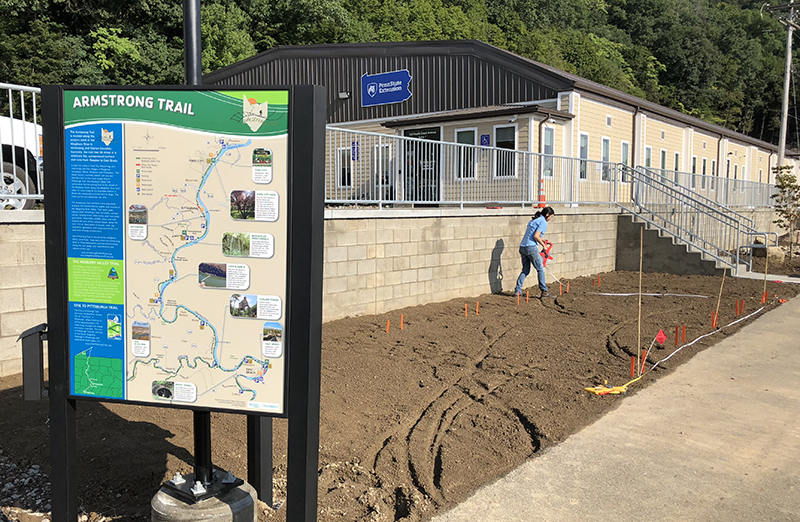
Penn State Extension Agronomist Rachel Milliron plants cover crops in an area adjacent to the Armstrong Trail on South Grant Avenue. The vegetation will not be full grown until next Spring.
The local landscape is changing along the Armstrong Trail.
In addition to general landscaping along South Grant Avenue in Kittanning, Penn State Extension is utilizing a 20-foot-by-13-foot section to plant various types of grasses that farmers use to raise grain to use for animal food.
The types of cover crops being planted are generally planted in our area, according to Penn State Extension Agronomist Rachel Milliron.
“We have grasses like cereal rye, oats, and rye grasses. Then we have legumes, which are in the bean family and include hairy vetch, crimson clover. Then other broad leaves like canola.”
The actual greenery won’t be seen until next year.
“Hopefully it will get established this fall, and some will die off like the oats and the radishes, but some over the winter will survive and in the spring, you will see pretty flowers.”
Milliron’s job as an agronomist is an area educator for Penn State Extension and works out of the new county facility adjacent to the courthouse annex building in Kittanning. She covers the southwest area incorporating science and technology for producing and using plants for food, fuel, fiber, and land reclamation, mostly to farmers.
Milliron said she is often called to a farm when a crop being raised for animal feed experiences a problem. She provides assistance to the farmer in the form of education to provide better production.
When the area along the trail is fully developed next year, it will be a working example of cover crops being grown in area farms.
